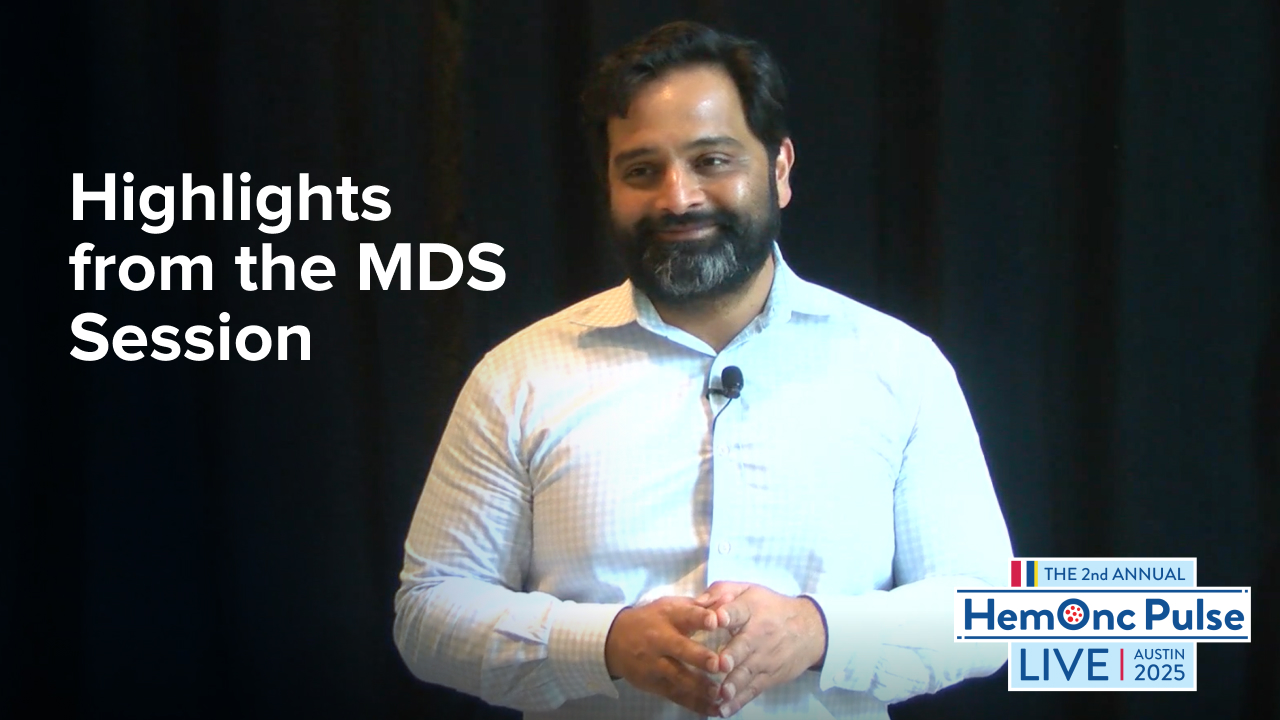
The Molecular International Prognostic Scoring System (IPSS-M) is more prognostically accurate in MDS compared to the Revised IPSS (IPSS-R), according to a study presented at the Twelfth Annual Meeting of the Society of Hematologic Oncology in Houston, Texas.
“In cases of discrepant risk classification, IPSS-M significantly improved prognostic assessment, particularly for high-risk IPSS-R cases with a low-risk mutational profile,” wrote Habibe Kurt, MD, of Brigham and Women’s Hospital in Boston, Massachusetts, and colleagues.
The investigators in this single-institution study calculated IPSS-R and IPSS-M scores for a cohort of 123 patients with MDS. The cohort was 38% female and had a median age of 74 years.
Assessed with the IPSS-R, 2% of the cohort had very-low-risk disease, 33% had low-risk disease, 23% had intermediate-risk disease, 23% had high-risk disease, and 19% had very-high-risk disease. The range of median overall survival (OS) rates was 4.6 years for patients with very-low-risk or low-risk disease to 0.7 years for patients with very-high-risk disease.
Assessed with the IPSS-M, 33% of the cohort had very-low-risk or low-risk disease, 7% had moderate-low-risk disease, 11% had moderate-high-risk disease, 19% had high-risk disease, and 30% had very-high-risk disease. The range of median OS rates was 4.6 years for patients with very-low-risk or low-risk disease to 0.9 years for patients with very-high-risk disease.
The investigators determined that the IPSS-M had superior OS discrimination compared with the IPSS-R based on a Cox model Harrell’s C statistic of 0.77 calculated for the former versus 0.68 for the latter. They commented that the local assay they used to evaluate the performance of the IPSS-M projections lacked KMT2APTD in 61% of patients, but that this did not compromise the superiority they observed.
“Using commercially available [next-generation sequencing] panels, even without identifying KMT2APTD, IPSS-M provided greater prognostic accuracy than IPSS-R,” Dr. Kurt and colleagues wrote.
The IPSS-R classified 71 patients in the cohort as having very-low-risk, low-risk, or intermediate-risk MDS, and 24% of those patients were reclassified by the IPSS-M as having high-risk or very-high-risk disease. The patients with reclassified disease had markedly worse two-year OS, calculated as 86% for IPSS-M low-risk disease and 42% for high-risk disease (P<0.001).
The IPSS-R classified 52 patients in the cohort as having high-risk or very-high-risk MDS, and 8% of those patients were reclassified by the IPSS-M as having very-low-risk, low-risk, or moderate-low-risk disease. The two-year OS rate calculated for the patients with reclassified disease was 100%.
Reference
Kurt H, Chergui A, Omer M, et al. Improved risk stratification of MDS patients with IPSS-M: A single-institution experience. Abstract #MDS-663. Presented at the Twelfth Annual Meeting of the Society of Hematologic Oncology; September 4-7, 2024; Houston, Texas.






 © 2025 Mashup Media, LLC, a Formedics Property. All Rights Reserved.
© 2025 Mashup Media, LLC, a Formedics Property. All Rights Reserved.